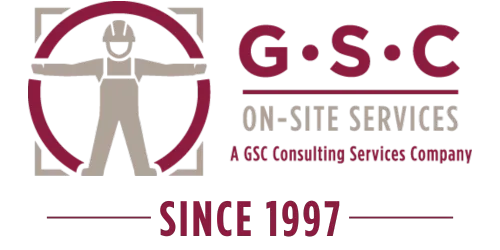The Life with Justin Stephens Blog

Overcoming Sales Slumps: A Point of View from Sales Veteran Sarah Kline
Hello, Life with Justin Stephens community! It's Justin here, kicking off today's post with a quick personal update before we dive into an inspiring guest perspective. Yesterday afternoon, I was involved in a car wreck—nothing too serious, thank goodness. I'm okay, just a bit shaken up, but the car looks like it might be totaled. Moments like this remind me how crucial it is to have solid insurance in place. It covers the unexpected, protects your finances, and gives peace of mind during chaos. If you're skimping on coverage, take this as a nudge to review your policy—it's a key part of personal finance and life strategy that can save you from major setbacks. Grateful to be safe and back at it today!
Now, shifting gears to our Point of View category, where we feature stories and insights from others on success, business, sales, and marketing. Today, I'm thrilled to introduce Sarah Kline, a seasoned sales executive with over 15 years in tech startups. Sarah's overcome her share of slumps and built multimillion-dollar pipelines. Her take on bouncing back is raw, actionable, and perfect for entrepreneurs hitting walls. Let's hear from her in her own words—I've asked her to expand on her experiences with more real-world examples to make it even more relatable and helpful for our readers.
Sarah Kline's Point of View: Navigating and Conquering Sales Slumps
Hey everyone, I'm Sarah Kline, and if there's one thing I've learned in sales, it's that slumps aren't just inevitable—they're opportunities in disguise. Early in my career, I hit a brutal dry spell: three months of zero closes, endless rejections, and that sinking doubt creeping in. It felt personal, but I realized it was about strategy, mindset, and persistence. Over the years, I've navigated multiple slumps—from economic downturns to personal burnout—and each one taught me valuable lessons. Here's my point of view on turning things around, drawn from real trenches, with some specific examples from my journey to illustrate.
First, diagnose the root cause. Is it your pitch? Market shifts? Or burnout? I once audited my calls and found my energy was flat—clients sensed it. Track metrics like outreach volume, conversion rates, and feedback. Tools like CRM software (we'll touch on resources in future posts) help pinpoint issues. Remember, data over drama.
For instance, during the 2020 pandemic, my sales plummeted because I was still using pre-COVID scripts that emphasized in-person demos. By analyzing my CRM data, I saw a 50% drop in engagement rates post-lockdown. The root cause? My approach wasn't adapting to virtual selling. Once I identified that, I pivoted to video tools and interactive online presentations, which revived my pipeline within weeks. Another time, in a B2B tech role, I realized a slump was due to targeting the wrong personas—decision-makers had shifted from IT directors to C-suite execs amid budget cuts. Auditing my lost deals revealed this pattern, so I refocused my prospecting, leading to a 30% increase in qualified leads.
Next, refine your approach. Experiment with personalization: Tailor pitches to pain points using research from LinkedIn or industry news. I switched from generic emails to value-packed stories, boosting responses by 40%. Incorporate storytelling—share how your product solved a similar problem. And don't forget follow-ups; 80% of sales require five or more touches.
A great example from my startup days: I was selling SaaS tools to small businesses and kept getting ghosted after initial calls. I refined by adding personalized video messages in follow-ups, recapping their specific challenges (like "I remember you mentioned scaling your team remotely—here's how our tool helped a similar company cut onboarding time by 25%"). This not only increased replies but closed three deals that quarter. In another slump during a competitive market surge, I experimented with A/B testing email subject lines—one generic ("Check Out Our Solution") vs. one targeted ("3 Ways to Boost Your Q4 Revenue Without Extra Headcount")—and the latter doubled open rates, pulling me out of the rut.
Mindset is king: Treat slumps as temporary. Practice gratitude journaling or visualization—picture that next win. Surround yourself with a network; I joined sales masterminds for accountability, echoing the goal-setting tips Justin shared yesterday.
I've been there with mindset slumps too. After a major client loss that tanked my confidence, I started a daily ritual: journaling three things I was grateful for in my career (like a supportive team or past wins) and visualizing a successful pitch. This shifted my energy, and within a month, I landed a bigger account. During a prolonged drought in 2018, I leaned on a mastermind group where we shared weekly wins and challenges—it provided fresh ideas, like role-playing objections, and kept me motivated. That accountability turned a six-month slump into a record-breaking year.
Finally, diversify: Build multiple streams like referrals or content marketing. In my slump, I started a LinkedIn series on sales hacks, which generated leads organically.
Diversification saved me during a tech industry slowdown. Instead of relying solely on cold outreach, I nurtured referrals by hosting virtual webinars on "Sales in Uncertain Times," inviting past clients to speak. This not only built trust but brought in warm leads that converted at twice the rate. Another example: I created a podcast episode series interviewing industry leaders, which positioned me as an expert and led to inbound inquiries, diversifying my pipeline and cushioning against future slumps.
Sales slumps test you, but they build resilience. Stay consistent, adapt, and celebrate small wins. You've got this! If you're in one now, start with that diagnosis— it could be the game-changer.
Thanks, Justin, for the platform. Looking forward to hearing your thoughts, readers.
Back to Justin: Sarah's insights hit home, especially as I reflect on my own business hurdles post-accident. Her emphasis on mindset, data-driven diagnosis, and diversification ties beautifully into our themes of personal growth, self-improvement, and entrepreneurial goals. It's a reminder that setbacks—like sales slumps or unexpected wrecks—are part of the journey, but with the right strategies (and insurance!), we bounce back stronger.
At Life with Justin Stephens, we blend my Journal Entries with diverse voices like Sarah's in Point of View, plus Life Strategy, Resources, and Great Causes to fuel your success in finance, business, and beyond.
Call to Action: Subscribe at justindcstephens.com for daily inspiration. Share this post, and comment: How do you beat a sales slump?
P.S. Tomorrow, a Resources post on top tools for financial tracking post-accidents and beyond. Stay tuned!
To your success,
Justin Stephens













